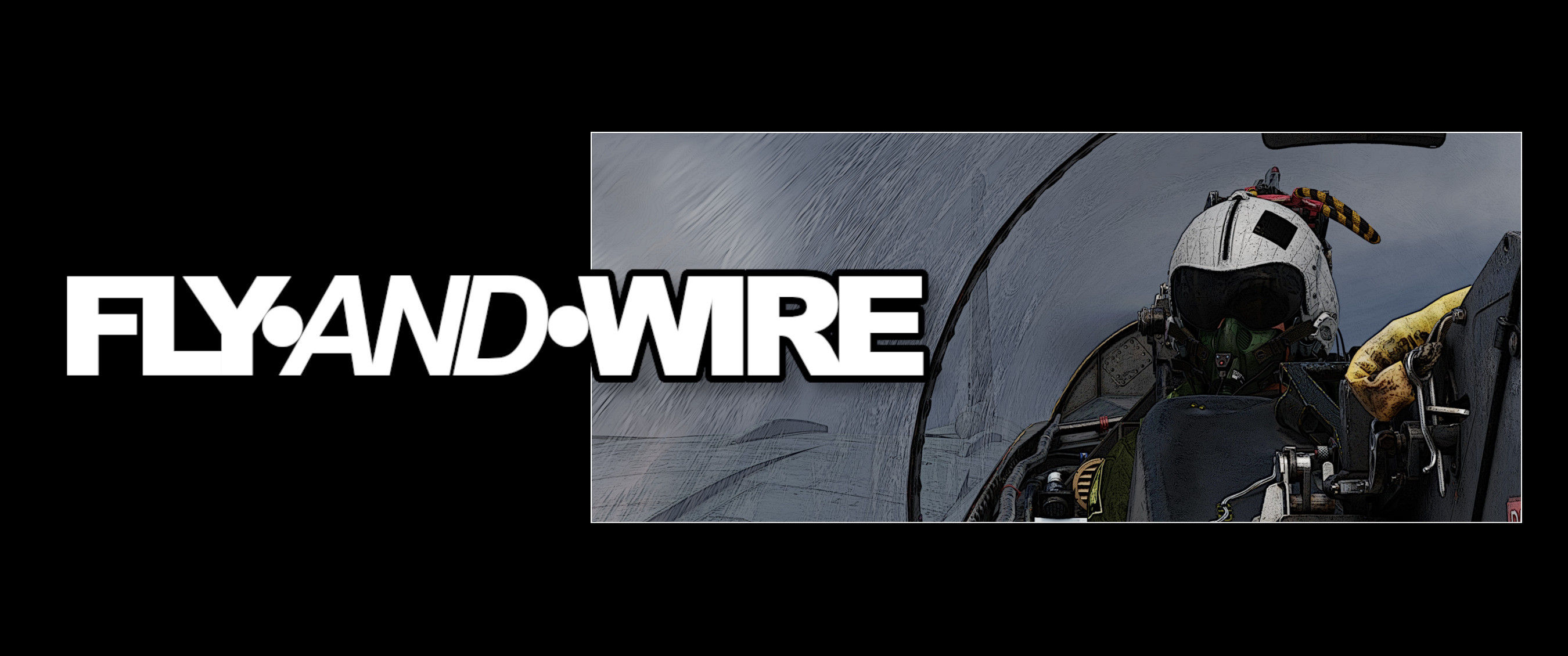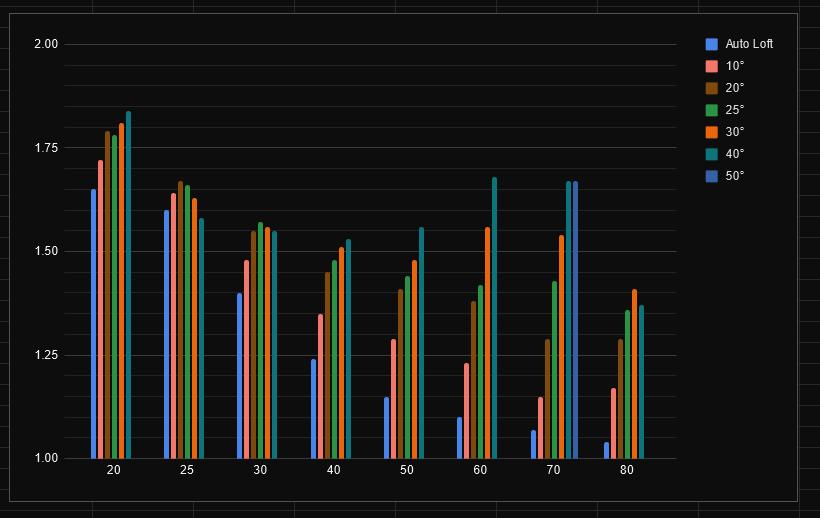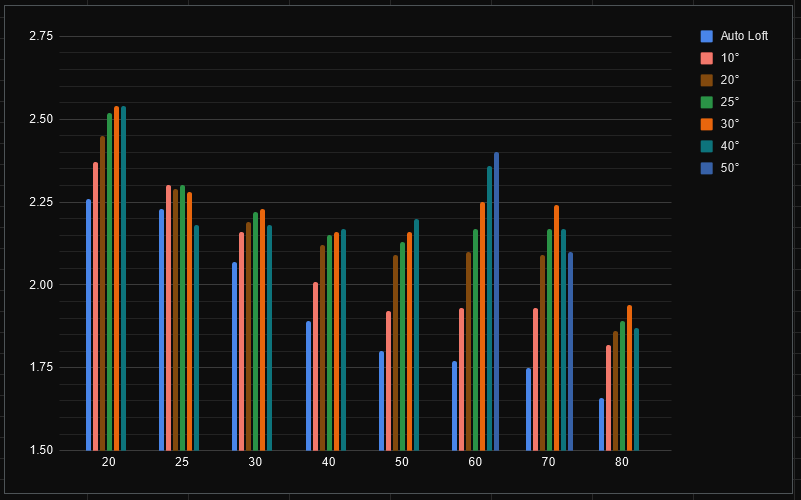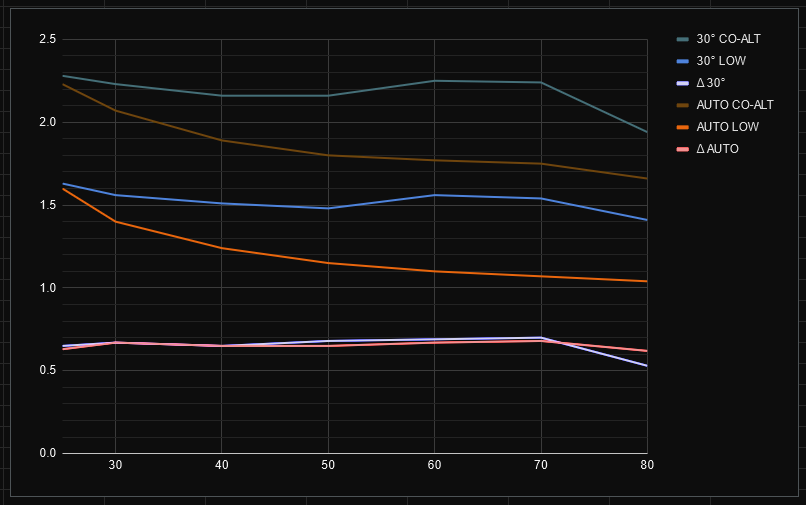-
Posts
1174 -
Joined
-
Last visited
-
Days Won
2
Content Type
Profiles
Forums
Events
Everything posted by Karon
-
LOL I like this definition. @Schmidtfire Got them. There are too many charts to post them all, so here is an example. AIM-54C Mk47 vs low-flying targets (I don't remember how low the target was, I need to check my notes. IIRC it was down to 5k). vs LOW-FLYNG TARGET STANDARD Mk47, STANDARD vs LOFT. DETAIL Manual loft helps a lot here, as the missile gets higher, so dives from higher altitude → faster at timeout. Away from that, you can see the massive impact of having to fly through the draggy lower part of the atmosphere. The Mk60 works differently, though.
-
Altitude has a dramatic effect on missile performance in DCS (no clue IRL). I'm in a hurry, but this is a comparison between AIM-120C-5 and AIM-54C Mk47. That's speed at impact vs range. See how it crumbles as you go lower? I have somewhere the tests vs a lower target, I have just no clue where I put them.
-
Amen if it doesn't connect, you are past MAR at that point, almost inside NEZ. It's a last ditch attempt to build separation, but I would Abort anyway. Out perhaps, depending on the altitude. I would have my wingman going In from a grinder, if possibile. If I'm on my own, I'd use the superior speed and endurance to go carry on until safety. I mean, there's a Controller there for a reason :) PDSTT with the C give you some options though: you can set the missile to active at any time, for example. About the Phoenix in general, you may be forgetting the geopolitical changes that blocked the development of its successor, along many other things: the mid/late 80s tumults in the USSR. As the threat faded, the need of superior weapons slowed down (see the Eurofighter and the AIM-152, to name two). All this to say, used in the appropriate time frame (vs MiG-21/23/25 and so on), it doesn't have any issue. Post early 90s, it's going to have more problems.
-
Depends. Here comes another dose of DCS nonsense: if you STT, the AI jams if capable. Thus, TWS may be the best option. On the other hand, you can kill a jamming AI at 60nm with little effort. If anything, your lock becomes stronger and goes through ZDF. If you put aside jamming, the AI defends at 10nm every time (54C) anyway, thus the whole "stealth" factor disappears entirely. However, you gain a solid lock vs close-flying targets, which can confuse TWS and result in an early extrapolating track, thus thrashing your missile. There's a lot more to say, but I'm rushing. Long story short, if an aircraft is coming hot on you at 20-25 nm, PSTT loft and split-S usually give you a lot of manoeuvring room: doesn't need guidance, the seeker does funny things, and definitely is a threat you need to defend from. See if this rubbish video helps
-
Yeah, I remember the AI AIM-54, I guess they based it on anecdotal accounts from some pilots. There are still interviews around where some say it gets to Mach 5 or something HB works on the documents they can find, and if one day something comes up concretely proving that the AIM-54 is capable of getting to Mach 27, I'm sure they'll implement it in such a way. In the meantime, to me, it looks good, and DCS is the reason why it fails more often than not (notching susceptibility, SA too easy to get, AI omniscient, and many other points). For example, the AIM-54 peer missile era-wise, the AIM-7, is noticeably slower than the Phoenix, and even the early AIM-120 weren't really hypersonic. The RWR consideration is more a DCS-ism than anything else. In this game, there's an obsession with stealth that it is simply not applicable to RL. At least according to several crew I had chats with. Nevertheless, I'm more than happy to use PDSTT even vs humans, especially as a follow-up shot, and I've been saying this since post overhaul of 2021 (or late 2020?). Even more so, along the new AIM-54C, which simply carries on on its own if the lock is broken - an unlikely case anyway. Anyway, I do agree with the lofting thing. I made a couple of videos about this, and the results were hilarious: I really hope that, once MT is stable, ED can divert more resources towards radars and missiles overhaul, and the completion of the famous API we've waiting for a few years now.
-
Sure, I made hundreds through the years. Put it this way: you can engage almost everything the radar sees, easily over 100nm, depending on the target size. I did test against almost stationary targets (M < 0.2), I built a performance model for most missiles using this modus operandi. Possibly, the max range is more related to battery time and DCS oddities than anything else (in 2019, above ~140nm, the '54 flew so high it was uncapable of diving on the target). Time wise, take a speed between M2.0 and M2.4, and use it against the range: there are too many parameters involved to have a proper, exact number.
-
Nah, not that I'm aware. Assuming you are providing the missile the best opportunities, geometry and launch parameters wise, then there is not much on your end, besides waiting for ED to overhaul this part of the simulation. Btw, I usually launch at 35k top. The thing is, flying higher can give the missile a little bit more juice, but the vast majority of the time, the missile would have enough energy to hit, and it's defeated by either very prolonged dives and drags (which is fine), or notching (which is not fine, not to the extent it's represented).
-
Correct, but there is much more to it. One of the hardest concepts for people to comprehend, for some odd reason, is that the greater the range at launch, the easier defeating a missile becomes. For example, say I'm the target: if I introduce an offset when I'm 10nm from the F-14, the correction the missile has to make before timeout is minimal. If I'm at 100nm instead, it can be too big to ensure that the missile arrives with sufficient energy to be a threat. It gets worse: variations in speed add more parameters to compensate for, on top of variations in altitude. The long-range factor opens up to more aleatory situations: for example, I may engage a target that it's just CAPping, so at some point it drags, and the missile is thrashed. This possibility is much lower if I engage a target at 20/30nm (silly example, but I hope it conveys the message). Here we go back to DCS and its issues: if you look at the only conflict where the Phoenix was used in considerable quantities, you have targets splashed at all sorts of distance and totally unaware of the danger. In fact, according to some authors, the Mirage F1 at least initially, was incapable of detecting the AIM-54, making it an easier target than other aircraft. So, if a fighter is unaware, it's an easy target. In DCS, it never happens. This exacerbates even more the whole TWS-dependency, whereas STT should be more relevant. The list of other points goes on forever, but what you mentioned, plus the intrinsic simplicity a long-range shot is defeated, make the AIM-54 a very era-dependant missile. The status quo was fully recognised and the AIM-152 was under development since mid-80s or something.
-

Tutorials and studies T2: Procedures, Timelines, Intercept Geometry
Karon replied to Karon's topic in General Tutorials
Chapter 5: we finally *pew pew*!- 28 replies
-
- 1
-

-
- bvr timeline
- intercept geometry
-
(and 1 more)
Tagged with:
-

Tutorials and studies T2: Procedures, Timelines, Intercept Geometry
Karon replied to Karon's topic in General Tutorials
Chapter 3 introduces the figure of the Controller (ground and airborne). I used real recordings from the two Sidra incidents occurred in 1981 and 1989, plus a modern exercise.- 28 replies
-
- 1
-

-
- bvr timeline
- intercept geometry
-
(and 1 more)
Tagged with:
-

Tutorials and studies T2: Procedures, Timelines, Intercept Geometry
Karon replied to Karon's topic in General Tutorials
Chapter 2.2 Yep, those are boats. Used to explain AA geometry.- 28 replies
-
- bvr timeline
- intercept geometry
-
(and 1 more)
Tagged with:
-
It's expected and very unreliable. I don't recall ever using that function, if it does not work it just messes up your awareness. I always go through the DDD.
-

Tutorials and studies T2: Procedures, Timelines, Intercept Geometry
Karon replied to Karon's topic in General Tutorials
Updating the IG study and added part XIV. Also, I started a great update of the 2019 BVR Timeline work. Chapter I: Introduction and Disclaimer Chapter 2.1 - Intercept Geometry: Basics- 28 replies
-
- 1
-

-
- bvr timeline
- intercept geometry
-
(and 1 more)
Tagged with:
-
Sure, IIRC if you set it to "take off from runway", and assign the Tomcat to a CV, it should start ready to go.
-
Ok, I'm looking forward to you teaching me then because after all I studied and written, the best I can do is repeat patterns and routines. That's not "mentality", it's mechanical repetition. EDIT: just seen IM's reply and I fully agree with him. Ctrl+F is one of the most OP things ever. Learning takes time, especially when it's something no one has done before (publicly for a videogame). Who would have guessed? If you want real sources you can apply directly, grab the P-825/02 (it's on Amazon UK, for example. Google is another OP thing). You can apply it in its integrity, it helps a lot to understand the basics. The next steps are manageable only with a proper instructor, or you invent it using your experience and whatever you consider common sense, as I did. If you want my recap, head here. Scroll to the bottom and start with part IG part I.
-
You are not going to achieve that. If you want to shape the correct forma mentis, you need qualified instructors who know what they are doing, plus a lot of time and effort. Seriously, the technical stuff can be learnt, mindset is the toughest part. I'm not exaggerating.
-
Exactly, but then I'd argue that either you cover every possible usage of the module, or the task is failed, no? This is indeed a game, but it is also a sandbox: it is what you want it to be. For instance, let's say you want to play airquake. Then you only need a kneeboard-page-size checklist about how to shoot a missile, and that's pretty much it. Then, dude#2 instead wants to simulate as much as possible; he cannot care less about airquake. From his perspective, either you dive into geometry, tactics, et similia, or your manual lacks a fundamental part. Then, dude#3, which is somewhat in-between. The kneeboard page is not enough, and he does not care about the minute details of tactics. None of those two solutions work for him. So, what do we do? Third addendum to the manual? It's a silly example, but should give you the idea of the possible problems: someone's going to complain anyway. Therefore, imo, better do as HB is doing, thus giving the technical and fundamental information, and save a ton of time in the process. Then, perhaps, linking to other sources, or have the community making something ad hoc (again, see Chuck's guide or the video Jabbers made at the start of the EA).
-
Yeah, I'm familiar with it. However, it may get a bit too convoluted, although having more would be nice. @The_Tau good point, I suppose this will come with the final release. Even later they may change, since most limitations are on ED's side.
-
I agree in principle, as adding more learning material is always great, but I thoroughly disagree with your two points. 1. The manual would end up being a thousand pages longer if it had to include the actual operative side edulcorated for a videogame. Missiles profiles are pointless, the moment a variable changes, the whole thing crashes down, and then the team would have to deal with even more complaints. This is a game, but also a simulation. You can't spoon-feed players. I played as an instructor for a decade, and it never worked. Players willing to lean need to put some proactivity and effort into it. And if they do, the manual has everything they need to understand what does what, then there are other sources that can help them to connect the dots (id est Chuck's guides and Google). If you want another example, look at how many complain about the Phoenix and don't even use TacView! They say the missile is bad when 70% of the times they are doing it wrong, and 29.99% of the times it's the AI doing its magic tricks. If people don't care about using a free tool that would solve most of their problems, how would a discussion about geometry, timelines, performance, help? What would help instead is linking directly to other sources. Chuck's as mentioned, but also CNATRA for example, and so on. By doing so, they'd have the manual telling them how things work, and the Navy would tell them how to use it. Simple. 2. Iceman is great, it is the best pilot I have flown with, it even corrects the changes in heading caused by the fluctuations of vC. It maintains speed and altitude appropriately, and has only one problem: its turn rate. We really need hard turns in-game. Everything else is fine.




